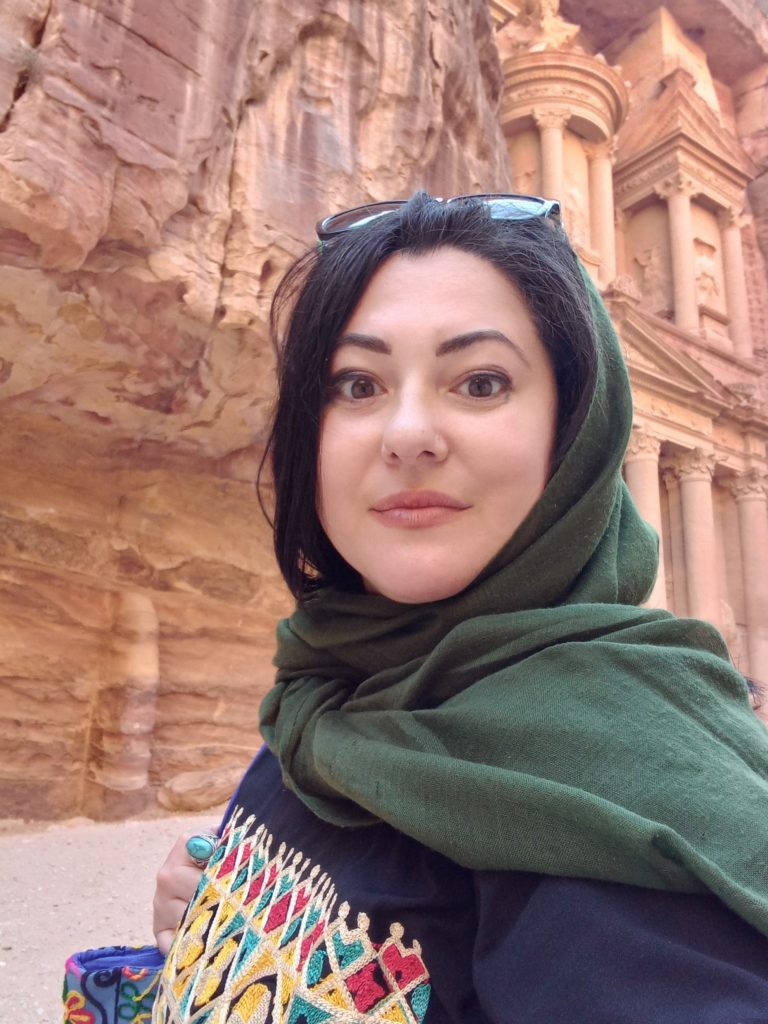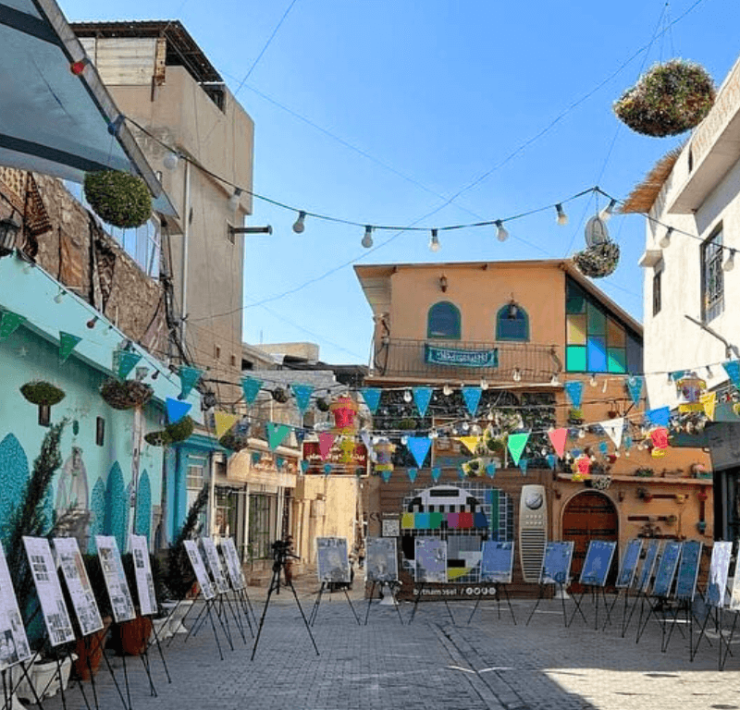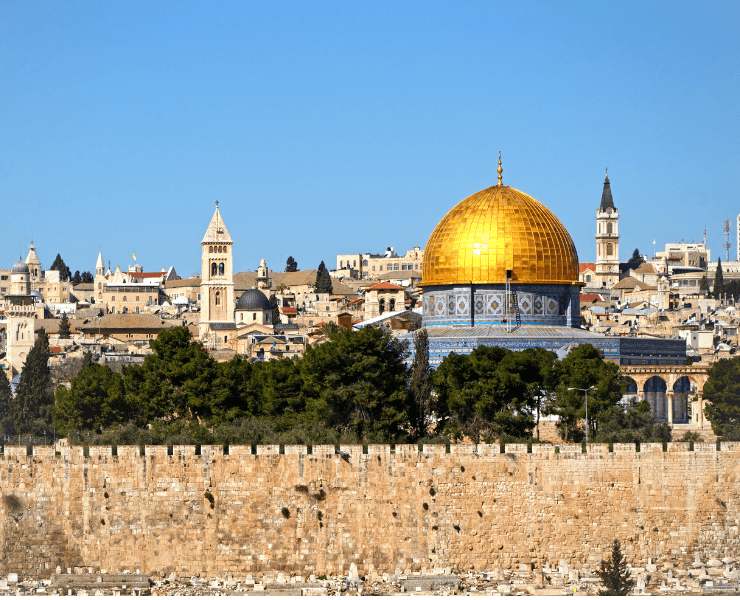Tasseography, also called Tasseomancy, is the art of reading coffee, tea, or wine sediments as a means for fortune-telling. Travelling to Jordan, I learned that there’s a storytelling component in there as well, and that the grounds at the bottom of a coffee cup are used to prompt fictional tales that help pass the time. Women get together and, for fun, share stories about the images they see. In this story I’ll take you on a journey to the Kingdom of Jordan, where I learned about using grounds to spin fictional tales. I’ll also bring you to my New York home where I took the skills I learned in Jordan and used them to read friends’ fortunes. Yalla!
As newlyweds, my husband and I would surprise each other with breakfast in bed. He’d spoil me with eggs, toast, sliced fruit, fresh squeezed orange juice, and, of course, coffee. Sometimes he’d make American coffee and sometimes he’d crack out the old stainless steel coffee pot and make Turkish coffee. On those mornings the entire apartment would smell of cardamom. If you’ve ever had the pleasure of waking up to a cup of Turkish coffee, you’ll understand the nostalgia this provokes.
One morning, as we sat there sipping our coffee, he told me a story from his youth. As a child, his mother and aunts would take their coffee cups and read each other’s fortunes, interpreting the patterns of the grounds inside their cups. I imagined them sitting in a semi-circle on the floor, looking into the bottom of a coffee cup like a crystal ball. But my bubble was quickly burst. My husband said that his family members didn’t read coffee grounds as a means to see the future, but more as a way to pass the time. He compared it to looking at the clouds and seeing the shapes in the sky.
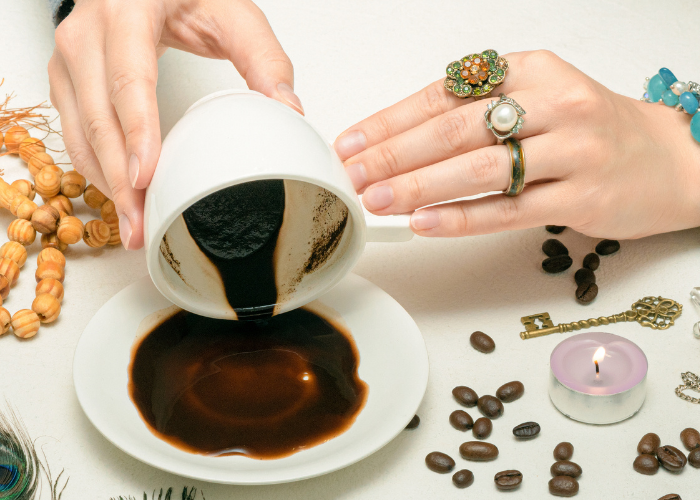
A few years after that conversation, I finally got to see my husband’s home country of Jordan for the first time. I’d spent years researching his culture and traditions on the internet, watching any vlog I could find about life in Amman. I worked hard to find traditional Levantine recipes, making kunafe, hummus and falafel from recipes I found online. And then finally, we were there.
Arriving at Queen Alia Airport, Jordan was like nothing I’d ever experienced. We hitched a taxi ride an hour north to my husband’s hometown and I couldn’t stop marvelling at the world around me. Palm trees, gigantic camels, sandy-coloured houses made of concrete – it was all so different and so beautiful.
I quickly noticed how important coffee was in my husband’s culture. That evening, arriving at my mother and father-in-law’s home for the first time, we were greeted with hugs, kisses, and coffee. In fact, coffee was served all day and all night, always on tap in a special thermos that stays hot all the time, just in case a guest drops by without warning. The coffee flowed consistently throughout our time in Jordan.
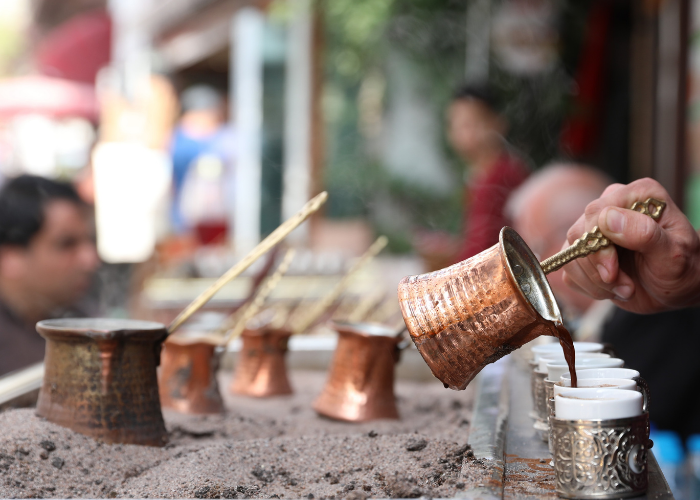
One day, a few months after arriving, I was at my sister-in-law’s home in Amman. The children were busying themselves in the courtyard. The smell of Maglouba was in the air. And the women were sitting on the floor drinking their coffee. In times like this, when my husband was away from me, I’d always get nervous. I didn’t speak very much Arabic and my husband was my translator. Being without him would provoke anxiety anytime something happened out of the ordinary.
The door was suddenly flung open and I saw my child in tears running towards me. He was upset about something one of his cousins had done, and frankly, he was ready for a nap. I tried to calm him but he wasn’t having it. Suddenly my sister-in-law appeared with a cup, she’d flipped it upside down on the saucer and the sediments were already dry. She used the images from the dried grounds in the cup to tell my son a story. I heard Arabic words I recognized: camel, mountain, star, fish.
My son watched her mouth and listened to her words, and saw the corresponding images around the cup. He twisted it like a kaleidoscope for a better look. She was telling him a story using the grounds in the coffee cup as a prompt.
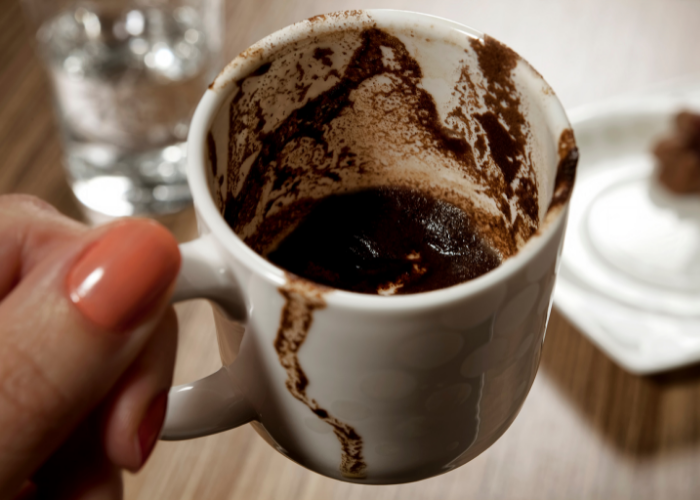
At that moment I knew that reading coffee grounds meant different things to different people. The grounds can be interpreted to understand someone’s path forward, but they can also be used to tell stories. And the thing about storytelling with Turkish coffee grounds is that the grounds inside the cup look like the Jordanian landscape: a sandy desert, complete with palm trees, camels and a beautiful sunset.
A few months later, back in New York I decided to explore Tasseomancy more. I went online and purchased books – I even found a vintage cup and saucer that were created to be used in tea leaf reading. But I was more interested in coffee ground reading. I couldn’t find anything specific to it, so I decided to hunt for products on my own. I found two milk glass mugs that do the job perfectly – they’re like a blank canvas, allowing the grounds to form shapes that are very visible to the eye because of the white background.
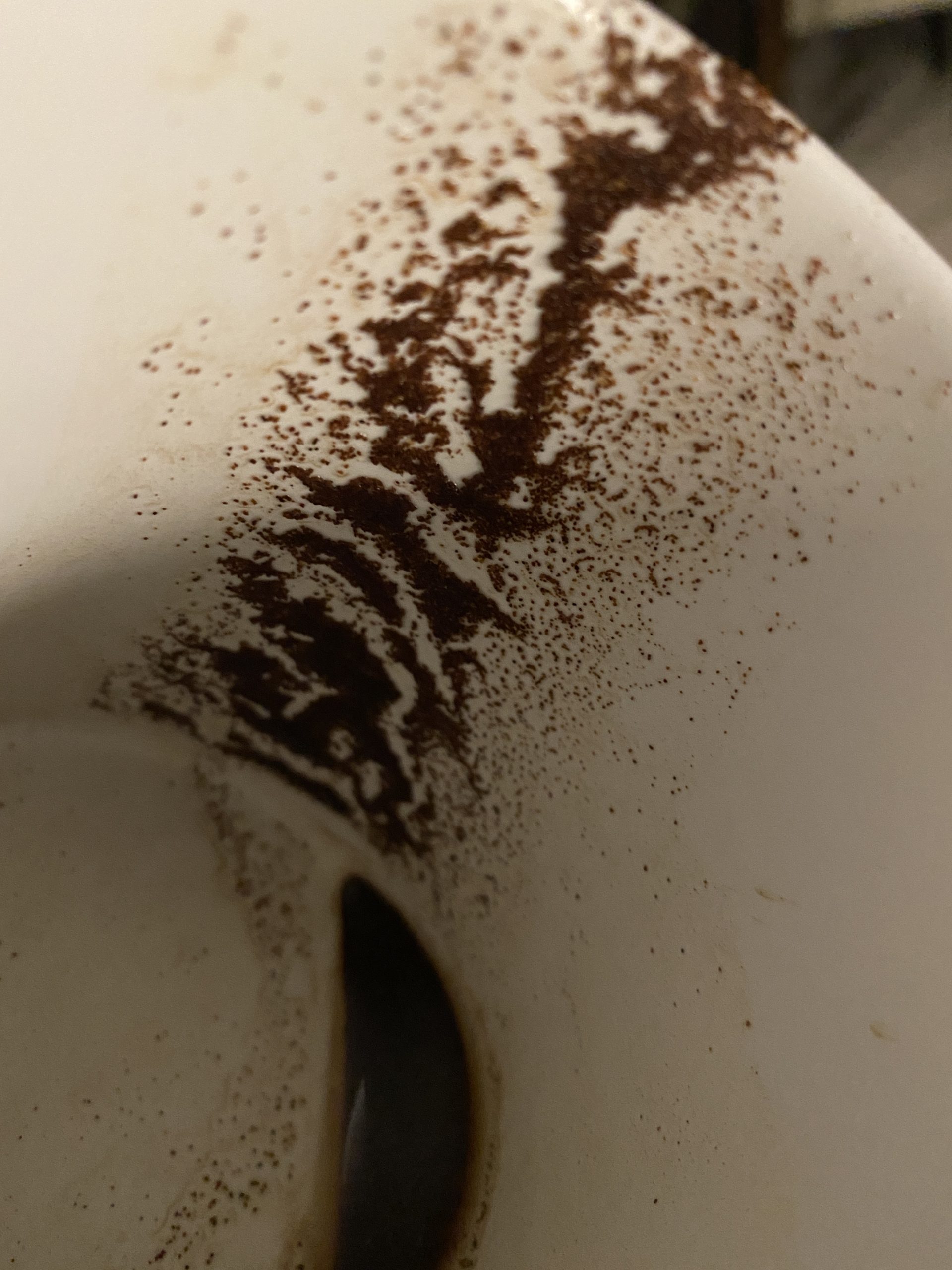
I began reading friends’ fortunes and have seen how much one’s energy goes into pushing the grounds around and creating the images in the cup. Everyone’s reading is different – the grounds never make the same image twice and that’s one of the things that’s so interesting about reading them. The person who’s sipping on that coffee is, in a way, blindly drawing the images we see. They don’t use a pen and paper, but instead draw the images based on how they drink their coffee. Do they take long, drawn out sips? Do they drink it too fast? Are they talking as they drink their coffee? Are they silent? All of this impacts the reading and it all works to create the patterns left behind for us to interpret. It is the drinker’s energy, aggression, and passiveness that create the images inside a cup.
Reading grounds is truly an artform. It’s beautiful. It’s fun. And there are so many ways to do it. It can be done as a means to look forward to the future. But it can also be done to spark the imagination for the purposes of writing or telling a story. Whatever it’s used for, I hope this tradition remains alive. And I hope to keep working on my own reading and storytelling methods.
Step by Step Turkish Coffee Grounds Reading
- Make your coffee as usual. I prefer Alameed (a Jordanian favourite), but any kind of unfiltered, Turkish coffee will do. Pour the coffee into a cup and drink until you’re near the end. There should only be a few sips left at the bottom.
- Move the cup in a circular motion three times, bringing the liquid up as close to the lip of the cup as you can, without it splashing over.
- Flip the cup onto the saucer; some liquid may overflow from the cup onto the saucer, that’s normal. Leave it there to dry for three minutes.
- The coffee should be sticking to the sides of the cup by now. You should be able to pick the cup up and see different images. Rotate the cup and look inside from different angles in order to get a new perspective.
- Certain symbols mean certain things. Below you’ll find some common shapes.
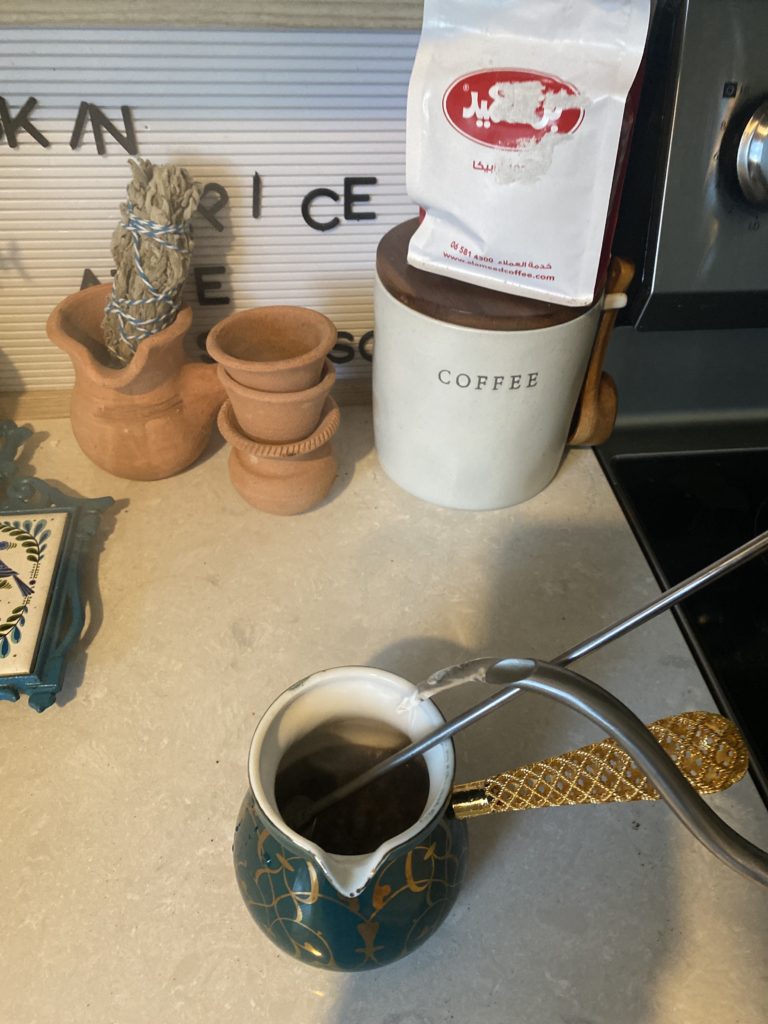
*** I am not an expert in reading Turkish coffee grounds, only a fan who does it for fun with friends. There are a heap of existing books about the art: I recommend Fortune in a Coffee Cup: Divination with Coffee Grounds by Sophia – but there are so many others as well.
Common Shapes and their Meanings
- Heart – love, new love, strengthening existing love
- Flames/Fire – passion, new love
- Key – finding something, success, finding success
- Eye – trust your gut, someone is looking out for you
- Mountain – an obstacle, something in your way
- Snake – jealousy, beware
- Purse – winning money, new job
- Numbers – you will see numbers in the grounds, ask the drinker about their significance
- Letters – you will see letters in the grounds, ask the drinker about their significance
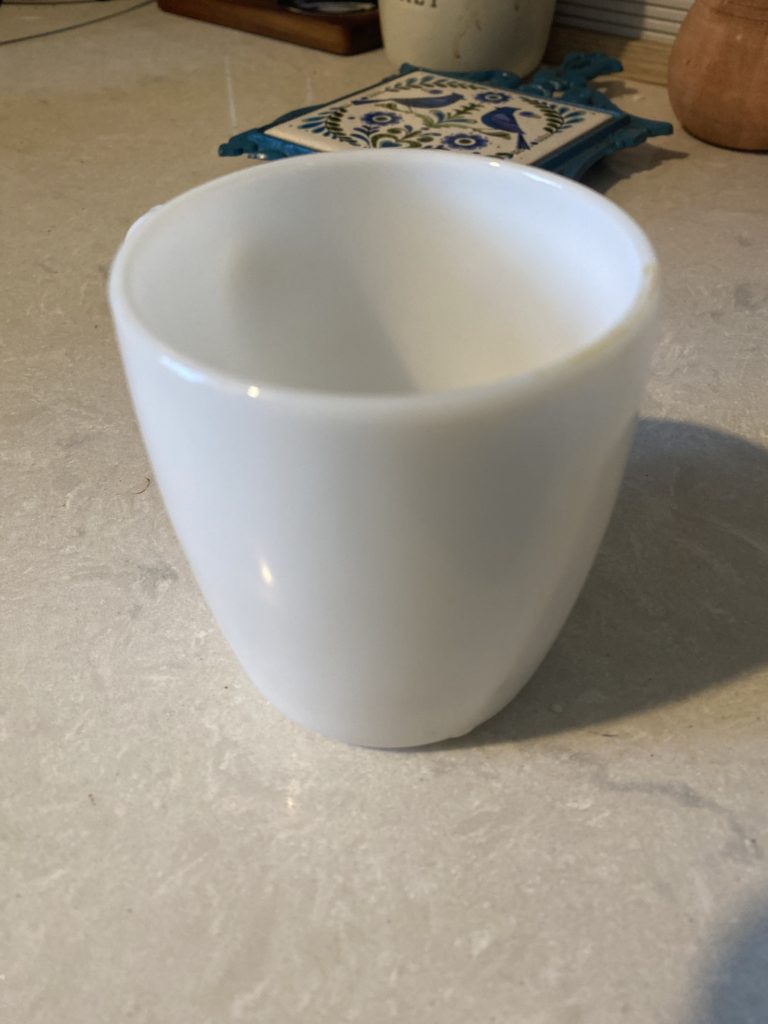
By Katherine Al Rashdan
Katherine Al Rashdan is a wife, mother, and writer living in New York and Jordan. She reads Turkish coffee grinds in her spare time for friends and others she’s met along the way. On Instagram she posts about Turkish coffee, and living between two cultures with her family. Say hello at @Katherine_Rashdan.
